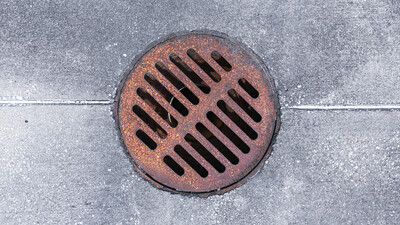What is a drainage gully?
In the context of drainage, a gully is a fitting that is used to connect rainwater, stormwater or wastewater systems to suitable drains.
A rainwater gully is typically found at the base of a downpipe connected to roofing gutters, while a stormwater gully – or road drainage gully – collects water from roads, car parks and other similar large areas of impermeable surfaces.
A domestic wastewater gully receives ‘grey’ water from washing machines, dishwashers, sinks, baths and showers, while an industrial wastewater gully may be typically used to drain areas where large amounts of water are generated during processing or cleaning operations.
While the design of the gully may vary, its functions remain the same. The main function is to create a pocket of water in the base of the gully that prevents unpleasant gases produced by decaying matter in the wastewater from escaping into the atmosphere.
The other function is to trap twigs, moss and leaves and prevent them from entering the drain.
How is a drainage gully constructed?
While drainage gullies follow one of two designs – the P-trap gully and the bottle-trap gully, they all share similar features:
The gully grate or grid
All drainage gullies have a grated lid that sits on top of the gully. The grid catches larger particles of debris and prevents them from entering the gully. The grate can be easily removed from the gully to clean it and remove any finer debris that might have passed through it and settled in the gully trap.
The gully hopper
The gully hopper is the uppermost section of a drainage gully. On a P-trap gully, the hopper is an integral part of the gully; on a bottle-trap gully, it is a separate, removable component.
The gully pot
The gully pot is the lowest section of a drainage gully and sits lower than the gully’s outlet. This is where the water trap is created and where smaller particles of debris that have escaped through the gully grate will collect.
The water trap
While the basic principle is the same, the water trap on a P-trap gully differs in design from that of a bottle trap gully.
With a P-trap gully the hopper, pot and outlet are a single, continuous pipe that resembles a rotated letter P, with the curve of the letter pointing downwards. As the entire curve of the letter is below the lowest level of the outlet, a pocket of water always remains here and prevents gases from escaping back up the drain.
With a bottle trap gully, the pot is a vertical, closed-base cylinder with a horizontal outlet coming off the side of the cylinder. The separate hopper fits inside the pot and its open base sits below the outlet pipe; this difference creates the water trap. A gap between the walls of the hopper and the pot allows the water that enters the hopper to flow into the pot and exit through the outlet.
How do you clean a drainage gully?
While a P-trap gully design is simpler and cheaper to manufacture, it has one drawback. Unless it has been fitted with an access point or rodding eye, it is very difficult to clear a blockage in a P-trap gully with a drain rod. Any blockage that cannot be cleared by hand or with a drain rod from elsewhere in the drain may require specialist electro-mechanical cleaning.
The more expensive bottle trap gully can be easily cleaned. Simply removing the hopper will give unrestricted access to the base of the pot and the opening of the outlet, allowing the gully and the drain to be easily cleared.
We hope you have found this information helpful and interesting. If you have any further questions, you are always welcome to call the friendly team of drainage experts at Drainfast on 01420 555600 or email [email protected].
Also, look out for more articles in our ongoing series of blog posts, bringing you useful information, insights, guides and tips on all things drainage!

Written by
Vicki James
Sales & Marketing Coordinator
Vicki is a vital part of the marketing team; from reporting to copywriting, she ensures we complete projects on time.

